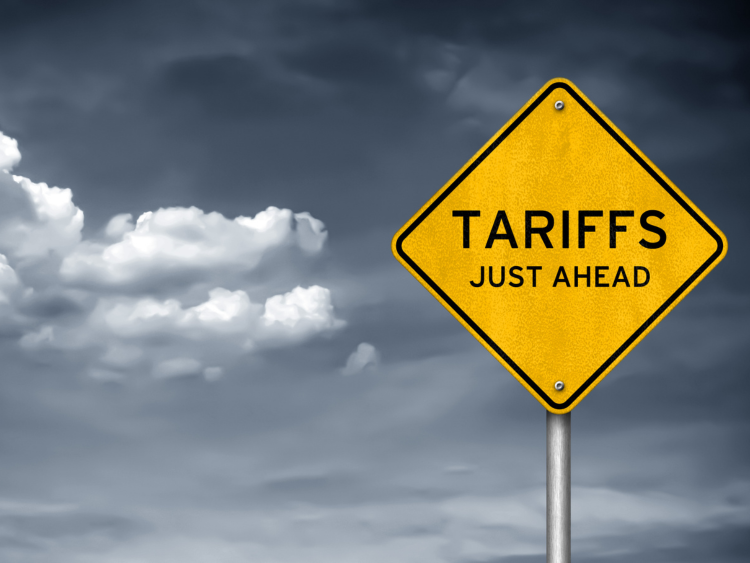Government/Policy

Leibowitz on Trade: Positioning (or Posturing) on Trade
Written by Lewis Leibowitz
January 5, 2021
Trade attorney and Steel Market Update contributor Lewis Leibowitz offers the following update on events in Washington:
As the nation (and the world) prepares for the inauguration of Joe Biden as the new president, many groups are releasing position papers telling the new administration what it should do about trade-related issues. They run the gamut from vaccines for the pandemic to medical equipment, to agriculture policy, China, steel and aluminum tariffs, and many other issues.
This activity is very typical during a presidential transition. The Biden team has, as I’ve written before, kept its options fairly open. There are a lot of issues commanding the new president’s attention, including the second impeachment of Donald Trump, voted by the House last Wednesday, as well as response to the pandemic. These issues will push international trade issues further down the agenda.
This week, I will set forth a few issues highlighting the trade agenda. I’ve selected three: (1) the future of steel and aluminum “Section 232” tariffs; (2) the announcement of a finding by USTR of Vietnam’s currency intervention to keep the Vietnamese currency artificially weak; and (3) advocacy for and against tariffs on Chinese imports and retaliation.
Steel and Aluminum Tariffs
Predictably, those groups that claim to benefit from the Section 232 tariffs on steel and aluminum urge the new administration to keep them. In a letter dated Jan. 11, major trade associations of steel producers (AISI, SMA, Committee on Pipe & Tube Imports, the steelworkers union and the American Institute of Steel Construction) urged the Biden administration to keep the Section 232 tariffs. The letter was short on specifics and did not mention the U.S. industries that require a competitive steel market in order to survive, such as automobiles, tires, construction, capital equipment and energy. Those “downstream” industries employ more than 50 times the workers employed in steel production.
On a similar note, the American Primary Aluminum Association urged the Biden administration to keep the Section 232 import restrictions on aluminum. Like steel, aluminum-using industries employ many more workers and contribute more to GDP and national defense than aluminum producers. Aluminum actually has a better case of importance to national defense than steel, but neither is particularly powerful. And the imposition of tariffs on imports of steel and aluminum products does not genuinely improve U.S. national security. Defense readiness is more about making things that are useful for defense than about making steel and aluminum.
Important groups, including the U.S. Chamber of Commerce, have long been critical of the steel and aluminum tariffs. Many have pointed out that the tariffs not only hurt downstream users of steel and aluminum in this country, but have resulted in retaliation against U.S. exporters by our most important trading partners that spread the damage beyond steel and aluminum-using industries.
While steel and aluminum producers may assume that their industries are more important than others that employ a vast multiple of workers and make products of higher value, that assumption is controversial. In fact, they do not mention downstream industries in their letters.
Vietnam Currency Manipulation
An investigation of alleged currency manipulation by Vietnam under Section 301 of the Trade Act of 1974 was initiated in October 2020. It resulted in a report finding that Vietnam manipulated the exchange rate of the Vietnamese currency, the Dong.
Section 301 requires two findings: first, that the actions by Vietnam are “unjustifiable;” and second, that those actions “burden or restrict” United States commerce. That is a pretty loose standard. In Section 301 cases, USTR typically finds that the consequences on U.S. commerce are substantial. Not so with respect to Vietnam’s currency practices.
The USTR report, issued on Friday, concluded that Vietnam had “contributed” to the undervaluation of the currency and that the undervaluation “effectively” lowered the price of goods exported from Vietnam to the United States. There was no estimate of how much prices were reduced and how much the manipulation actually contributed to the reduction of the Dong’s value.
Further, the USTR report did not recommend any action by the United States, leaving that decision to the next administration. The Vietnam currency report by USTR therefore did not add substantially to the body of knowledge concerning whether anything should be done in the U.S. national interest about Vietnam’s alleged “currency manipulation.” The American Chamber of Commerce in Vietnam asserted that none of its members has expressed any concern about Vietnam’s actions with regard to its currency; if there were a problem, why were major exporters to Vietnam not concerned?
There are other possible avenues for action against Vietnam. Under legislation enacted in 1988 and 2015, the Treasury Department (which has already determined that Vietnam is a “currency manipulator”) could enter into negotiations to change Vietnam’s behavior or encourage actions to negate or reduce the manipulation. And the current countervailing duty investigation of tires from Vietnam includes currency manipulation as an issue. The Section 301 investigation seems almost beside the point.
There is no real energy behind those actions. The American Chamber of Commerce in Vietnam, an arm of the U.S. Chamber, reports that none of its members has complained about Vietnam’s currency practices.
China Tariffs
In an interview with The Wall Street Journal last week, outgoing Trade Representative Robert Lighthizer advocated retaining the tariff regime on Chinese imports into the United States. These tariffs, in effect beginning in July 2018, now affect about $350 billion in imports. China has imposed retaliatory tariffs, largely on U.S. agricultural goods, which also remain in effect. To compound the problem on U.S. manufacturers and exporters, numerous “exclusions” on imports of Chinese goods expired on Dec. 31, imposing new costs on companies that are dependent on China for the time being.
Most commentators expect the China tariffs to remain in effect for the time being. China is perceived by most Americans as a rival to the U.S., implicating national security more immediately than steel and aluminum issues. Therefore, repealing the China tariffs should, most observers agree, be paired with other measures that would help to change China’s behavior on issues such as theft of trade secrets, coerced technology transfer and the like. New officials will need to be in place and evaluate the options before doing anything important. However, some commenters urge the incoming Biden administration to resume the exclusion process so that industries dependent on Chinese supply chains are not unduly harmed by the continuing trade war.
Conclusion
The Biden administration will certainly make some changes to trade policy. In the three areas I’ve selected, events beyond anyone’s control may force policy changes. It seems unlikely that the Biden team will have to make immediate decisions on the Vietnam currency issue, because the USTR report and the Treasury designation leave the new administration with maximum freedom of action.
On the steel and aluminum tariffs, there continues to be heavy political pressure both to keep the tariffs and to remove them, as noted earlier. This pressure will continue, and external events (court decisions and WTO cases) may force actions to change the tariffs. (Indeed, pressure to ease the steel and aluminum tariffs forced Trump’s Commerce Department to amend the product exclusion regulations, establishing product-specific “automatic” exclusions. The domestic steel producers wrote a protest letter against those “automatic” exclusions on Jan. 4—a clear effort by the domestic steel producers to keep high bureaucratic barriers to product exclusions.). Additional court decisions on the steel and aluminum tariffs are expected during 2021, which may necessitate revisions to the trade restrictions to conform to court orders.
However, a note of realism is necessary: Section 232 steel and aluminum tariffs will not fix, or even affect, global overcapacity in steel and aluminum production. If the tariffs are justified, they cannot be based on addressing overcapacity, leaving one to wonder why they remain.
That leaves China tariffs. Anything is possible there. Evaluating the options will be a priority for the new administration. A broad and consistent strategy is called for in dealing with China, and that strategy goes far beyond international trade flows. This will be a major challenge facing the new administration.
The Law Office of Lewis E. Leibowitz
1400 16th Street, N.W.
Suite 350
Washington, D.C. 20036
Phone: (202) 776-1142
Fax: (202) 861-2924
Cell: (202) 250-1551

Lewis Leibowitz
Read more from Lewis LeibowitzLatest in Government/Policy

Leibowitz: Is the China truce real or a Band-Aid?
US President Donald Trump and Chinese President Xi Jinping on Thursday had a much-anticipated meeting. Is it only a hiatus in the trade war, or did it really change the situation? I suspect the former, I but hope for the latter.

Price on Trade: The foolishness of free trade with controlled economies
It was only a matter of time before a shutdown happened. And, no, we aren’t talking about the federal government’s lapse in appropriations. On Oct. 9, Beijing announced a series of restrictions that will effectively shut down exports of rare earth elements, magnets, and certain downstream products vital to advanced manufacturing.

Trump pulls plug on trade talks with Canada after anti-tariff Reagan ad
US President Donald Trump took to social media late Thursday night to announce he was canceling trade talks with Canada.

Leibowitz: Renewed trade war with China over rare earths
On Oct.10, President Trump announced major increases in tariffs on Chinese goods. The trigger was a new regime of export controls on rare earth metals and products using those elements, including magnets, capital equipment, and catalysts for catalytic converters in cars and trucks.

Industry piles on new Section 232 steel derivative inclusion requests
The Department of Commerce received 97 submissions from producers, manufacturers, and groups seeking Section 232 tariff coverage for steel and aluminum derivative products.
